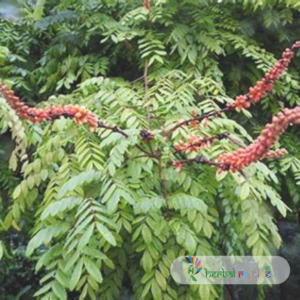Introduction
Wagatea spicata, also known as Guchh-karanja in Ayurveda and Okkadi-kodi or Pulinakkagondai in Siddha, is a plant species found in the Western Ghats region. It is commonly referred to as “Vaakeri” in Maharashtra, and is closely related to Caesalpinia digyna Rottl.
Therauptic Uses
The roots of Wagatea spicata have been traditionally used in the treatment of pneumonia, while the bark is applied externally to alleviate skin diseases. These medicinal uses have been attributed to the presence of vakerin in the plant.
Studies have shown that vakerin does not inhibit the stimulating effects of histamine and acetylcholine, suggesting that Wagatea spicata may have additional mechanisms of action in treating respiratory conditions. Furthermore, the pods of the plant contain a significant amount of tannic acid, which has known health benefits.

Wagatea spicata is a valuable medicinal plant that deserves further exploration for its potential therapeutic applications. Its presence in the Western Ghats region makes it an important resource for traditional medicine practitioners and researchers alike. By conducting more studies on its active compounds and pharmacological properties, we can unlock the full potential of this plant in modern medicine.
Conclusion
To summarize, Wagatea spicata Dalz. (Caesalpiniaceae) is a medicinal plant found in the Western Ghats region. Its roots have been traditionally used to treat pneumonia, while the bark is used externally for skin diseases. The plant contains vakerin, which has shown promising effects in respiratory conditions. Additionally, the pods of the plant contain tannic acid, which has known health benefits. Further research is needed to fully understand the therapeutic potential of this plant and its active compounds.
Frequently Asked Questions
What is Wagatea spicata?
Wagatea spicata, also known as Guchh-karanja in Ayurveda and Okkadi-kodi in Siddha, is a plant species found in the Western Ghats region of India.
What are the common names for Wagatea spicata?
It is commonly referred to as “Vaakeri” in Maharashtra and is closely related to Caesalpinia digyna.
What are the traditional uses of Wagatea spicata?
Traditionally, the roots are used to treat pneumonia, and the bark is applied externally to alleviate skin diseases.
What is the active compound in Wagatea spicata?
The plant contains a compound called vakerin, which is believed to contribute to its medicinal properties.
Does vakerin have any effects on histamine or acetylcholine?
Studies suggest that vakerin does not inhibit the stimulating effects of histamine and acetylcholine, indicating potential alternative mechanisms of action in treating respiratory conditions.
What health benefits do the pods of Wagatea spicata offer?
The pods contain a significant amount of tannic acid, which is known for its health benefits.
Why is Wagatea spicata significant for traditional medicine?
Its traditional uses in treating pneumonia and skin diseases make it an important resource for practitioners and researchers in the field of herbal medicine.
What is the potential of Wagatea spicata in modern medicine?
The plant’s active compounds and traditional applications warrant further exploration to unlock its full therapeutic potential.
Is there scientific research on Wagatea spicata?
Research is limited, and more studies are needed to understand its pharmacological properties and efficacy fully.


